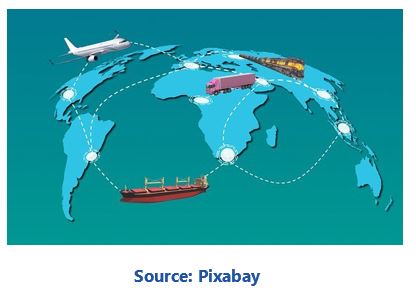

Managing freight spend is crucial in today’s volatile and COVID-constrained market. Freight spend covers the gamut from route optimization, rate negotiation, warehouse distribution, carrier, and vendor management, to tariffs and regulatory compliance. By evaluating these factors, shippers can gain insight into their freight operations, allowing them to establish accurate baselines, identify hidden costs, and spot areas where transportation spend could be reduced.
As freight transportation continues to change, service providers are using technology to improve and meet the dynamics of the supply chain. The three traditional methods of freight transportation are the use of a transportation management system (TMS), transportation execution system (TES), and managed transportation services (MTS). Ultimately, it comes down to whether shippers want to manage their freight spend in-house or outsource it.
The most common application for in-house management is a TMS. A TMS offers optimization capabilities across multiple modes to improve service levels and reduce freight spend. The alternatives to TMS include TES and MTS. TES solutions are mode specific and lack optimization capabilities, but for shippers with simpler transportation requirements, it is often all they need.

For each of these options, software and service providers need to set a clear path for success. Below are some transportation strategies for success for suppliers of TMS, TES, and MTS.
Software-as-a-service (SaaS) solutions are becoming the norm in the industry, and this does not apply only to smaller companies that are targeting Tier 2 and Tier 3 customers. A robust SaaS solution offers the same features and functionality as an on-premise solution and can be deployed quickly and cost-efficiently. This is especially true during the pandemic when more employees are continuing to work remotely. This includes job functions that have historically been performed on premise; a SaaS solution enables rapid updates to be pushed out to all employees without the need for time-consuming upgrades and configurations.
The last mile is the most difficult and most expensive part of the supply chain journey. The growth of e-commerce and omni-channel should represent an opportunity for TMS suppliers. Currently, it does for only a few providers of fleet management. There are several reasons for this:
The pandemic has changed the outlook for direct-to-consumer commerce, and a TMS is now a critical component of this strategy. There is still room to compete in the last mile, but suppliers need to think creatively to capitalize on this opportunity.
For TES providers, the growth of e-commerce is only going to make the last mile more important. Better ETA and better visibility into when orders will arrive are a requirement.
Real-time visibility solutions are more important than ever. Electronic data interchange (EDI) solutions have proven deficient in providing robust visibility. TMS suppliers need to partner with transportation visibility companies or build their own solution.
ARC Advisory Group clients can view the complete report at ARC Client Portal
If you would like to buy this report or obtain information about how to become a client, please Contact Us
Keywords: Freight Spend, Transportation Strategies, TMS, TES, MTS, Pandemic, ARC Advisory Group.

